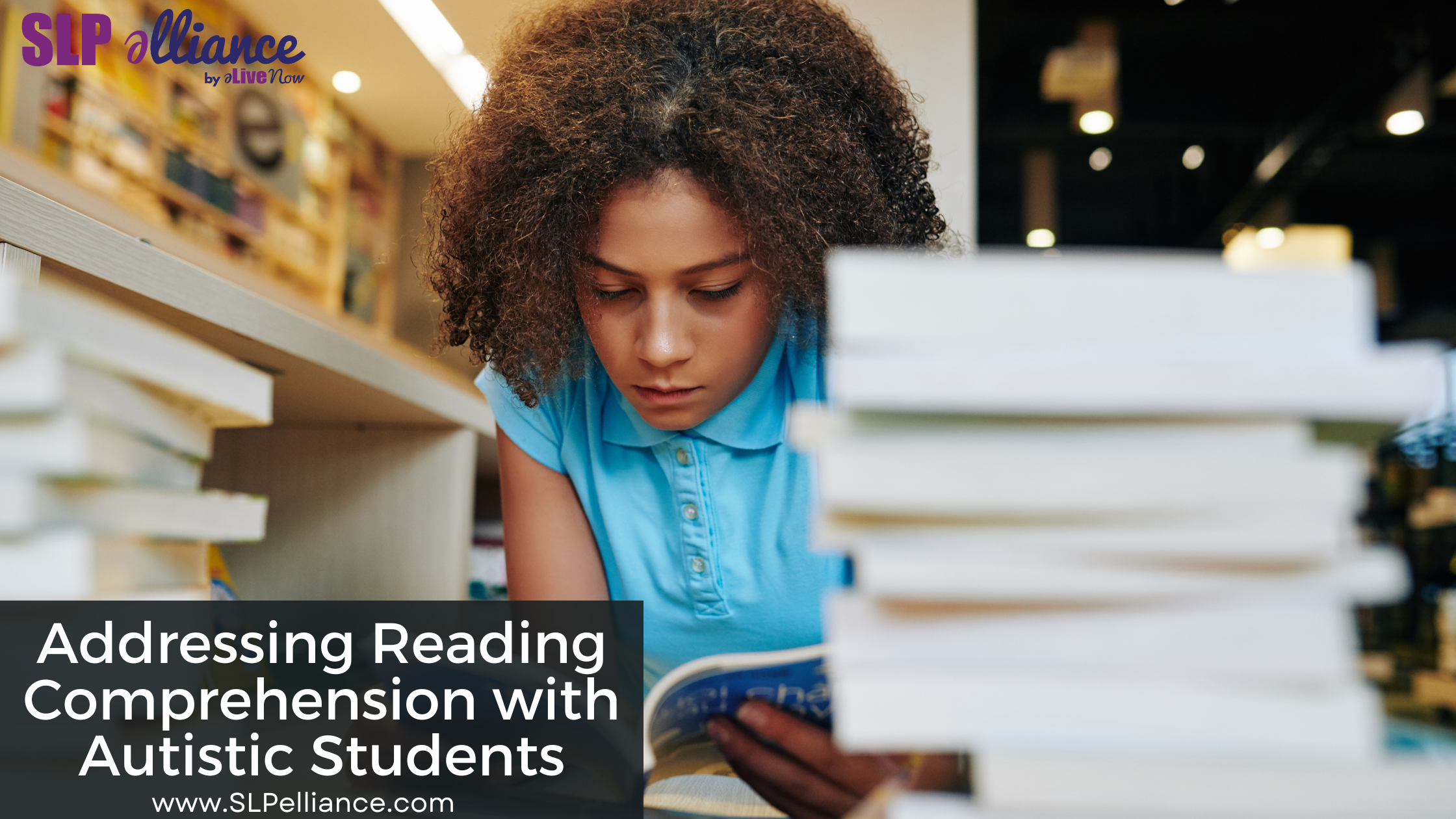I’ve been attending different state speech and hearing association conferences this year and can say Shari Robertson has turned into one of my favorite speakers. If you ever decide to go to your state conference and see her name on the schedule- please check her out! One of the topics she discussed was reading comprehension. It’s a goal area that lingers well into high school for many of our students. I have found that once I’m treating a 14+-year-old who is working on this topic that I struggle to find engaging materials, I wonder if I’m focusing on the right thing, and I ask myself “is therapy even helping?”.
Well, it is EXTREMELY important to understand the background of how this student got here before deciding on a treatment method. Here are the notes along with a few takeaways I got from Shari Robertson’s course on Reading Comprehension.
| Hyperlexia | Reading Comprehension Disorder |
| 1. Decoding develops early and spontaneously 2. Intense interest in letters 3. Significant gap between word-level decoding and comprehension 4. Not related to lower levels skills like phonemic awareness 5. Exclusive to ASD 6. Related to reading fluency vocabulary and comprehension | 1. Poor decoding 2. Poor reading comprehension 3. Poor phonics 4. Poor phonemic awareness 5. Poor reading fluency 6. Poor vocabulary |
Have you ever heard some parents get so excited that their child can read at a very young age? ASD students are often obsessed with letters + numbers, and the parents see this as a huge win, especially when they’re dealing with the other struggles of raising a child with a disability.
Children viewed as “reading superstars” in kindergarten often thrive at this age because decoding has rules. It is repetitive and restrictive, which is something autistic persons are drawn towards. However, once these “reading superstars” reach the 4th grade (the time when independent comprehension of materials becomes critical for academic success), there appears to be a “sudden” decline in the ability to keep up. This shouldn’t be viewed as unexpected for this population, as the signs were all there. Comprehension is complex, and text comprehension is why we read in the first place. These students can read but don’t gain information from the text because they only have the decoding piece.
Think about the social aspect of reading with a child. Learning to read should be viewed as a social experience (joint attention, discussion about the vocabulary and experiences, the adult scaffolds the text to promote comprehension); however, young children with ASD who appear advanced in reading are doing so without parent involvement and are focusing on the text alone (not the visuals, not the meaning behind the text). It is almost as if the pictures aren’t there at all. The restrictive interests of these individuals make flexible thinking, inferencing, and interpreting concepts like multiple-meaning words incredibly difficult.
Shari gave some fantastic evidence-based suggestions as to how to address this rigidity in students who excel at decoding but fall short in comprehension:
- With these “superstar readers,” we have to focus on identifying and unmasking the problem early even though it seems like they are doing well on their own. Parents and educators are frequently resistant to intervention because they are “blinded by strengths” when the students demonstrate superficial comprehension.
- Find a list of English heteronyms to determine if they’re comprehending
- Use passage/story retell charts to breakdown the who, what, where, when, and why
- Do a reading fluency check (accuracy, speed, prosody- the prosody is the piece that tells us if they’re comprehending, so “Prosody is the Key!”)
- Typical people know a little about a lot of things, while ASD persons know a lot about a few things. In other words- they won’t read it if it isn’t a topic of interest. It is just fine to focus therapy on topics of interest as long as it keeps them engaged!
I highly recommend checking out her website as she offers free resources in this topic area. One of my FAVORITES is her wordless books. You can use these with all children to encourage interpreting the scene rather than focusing on the text.
Note: I have no financial ties to this company, and this is not an ad.

